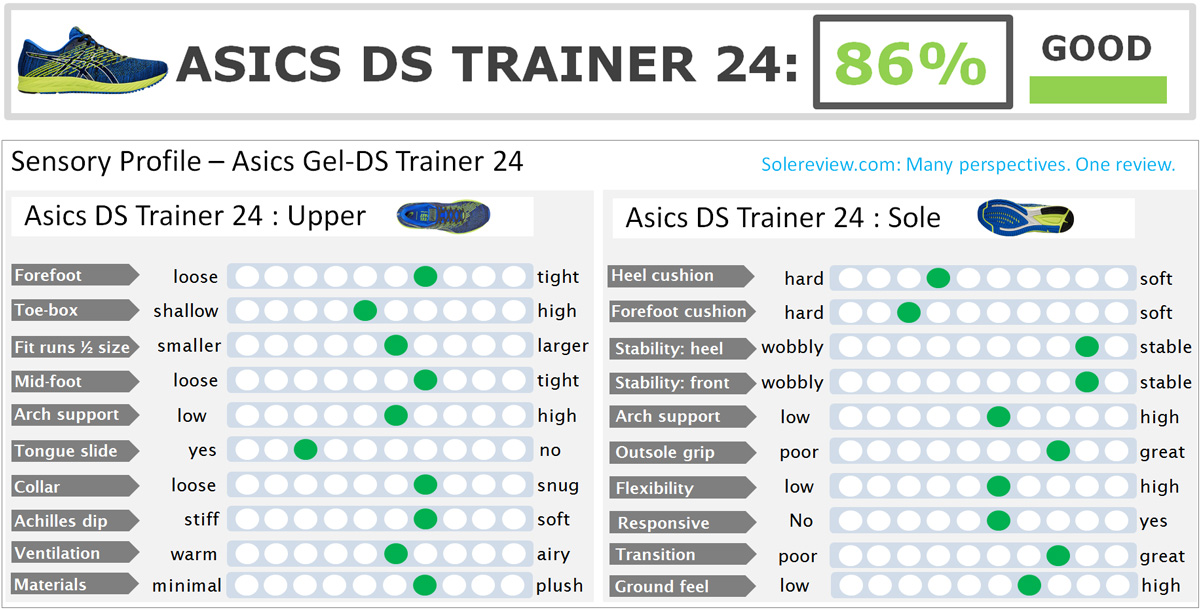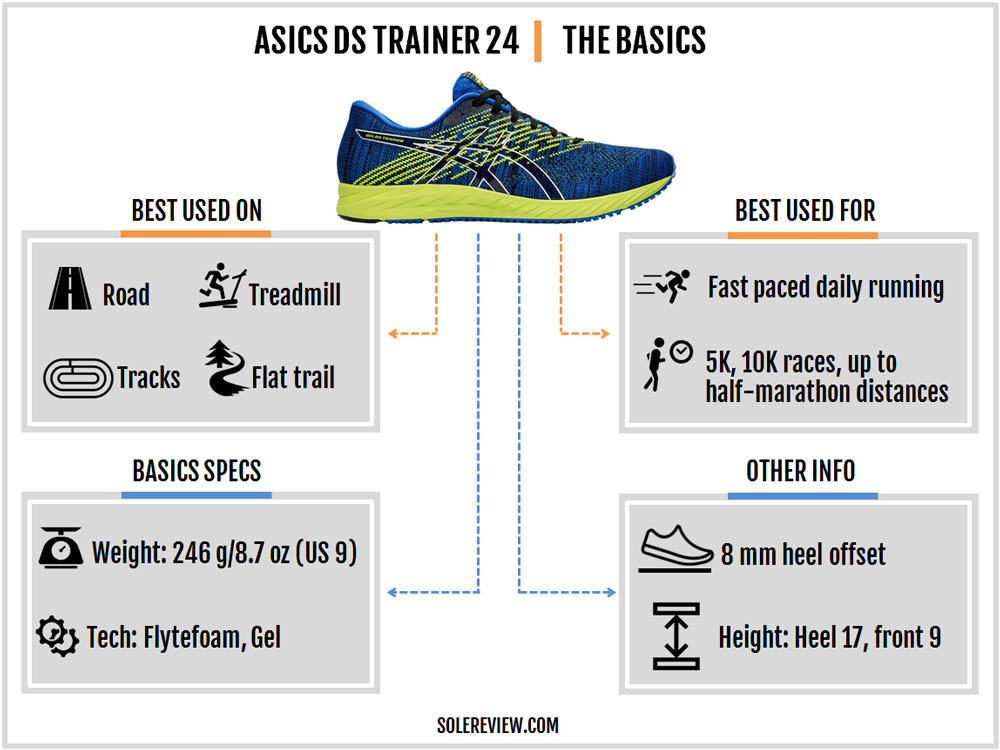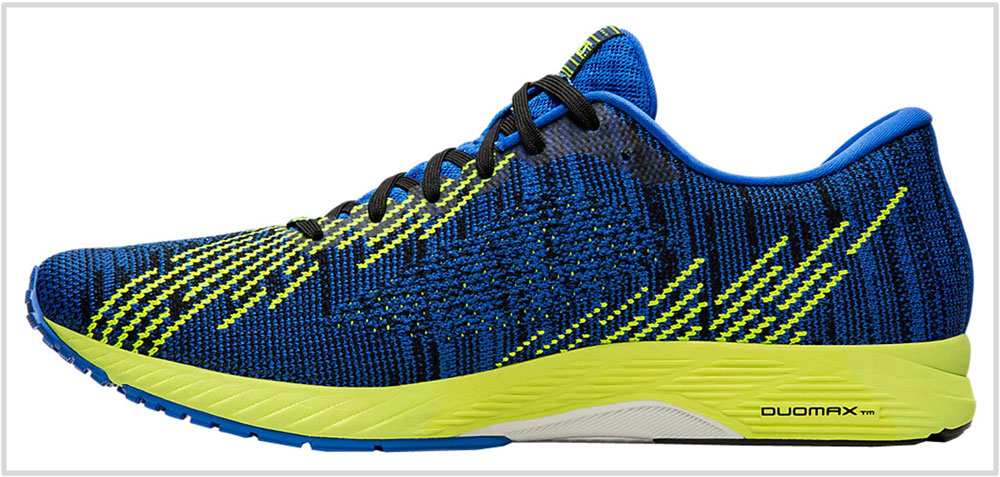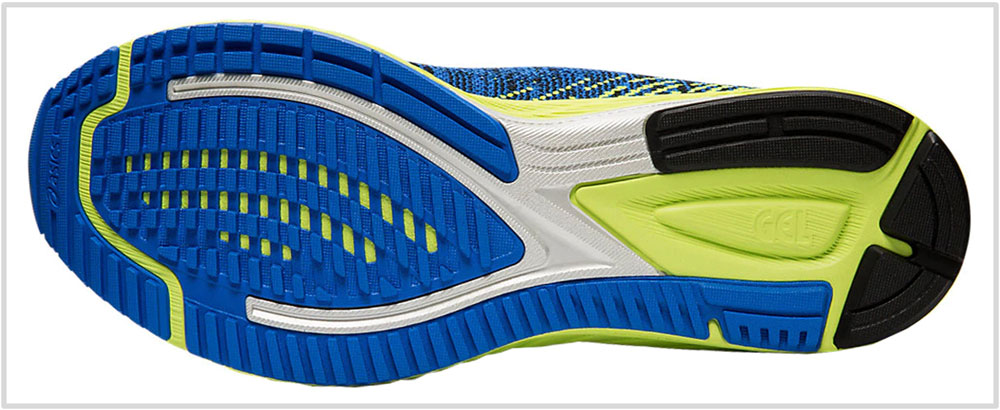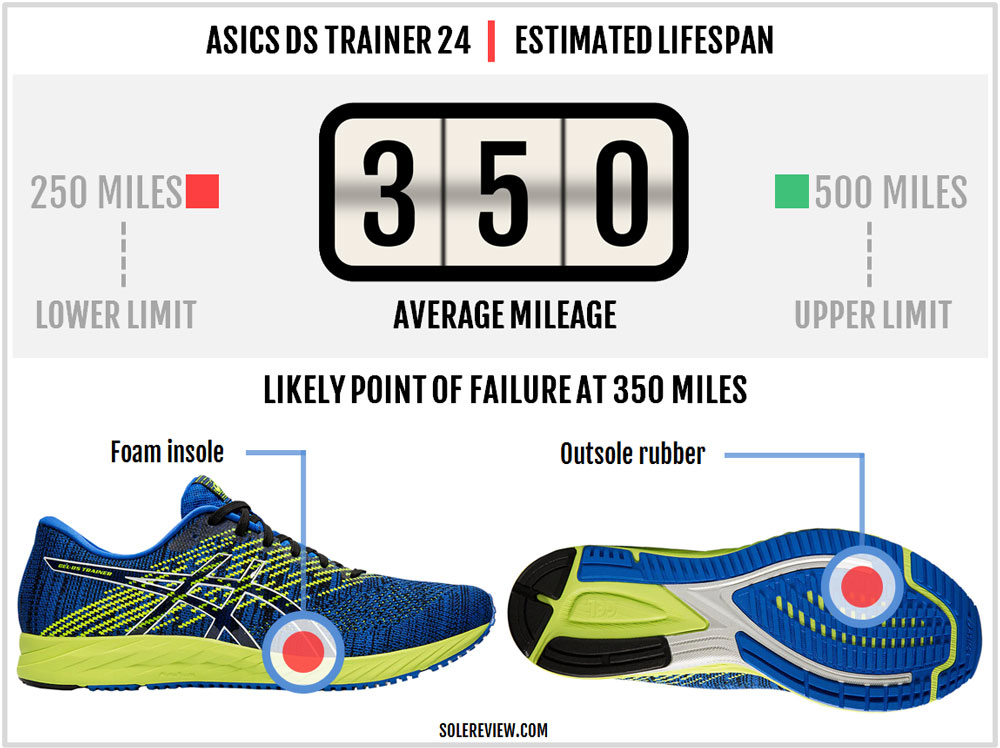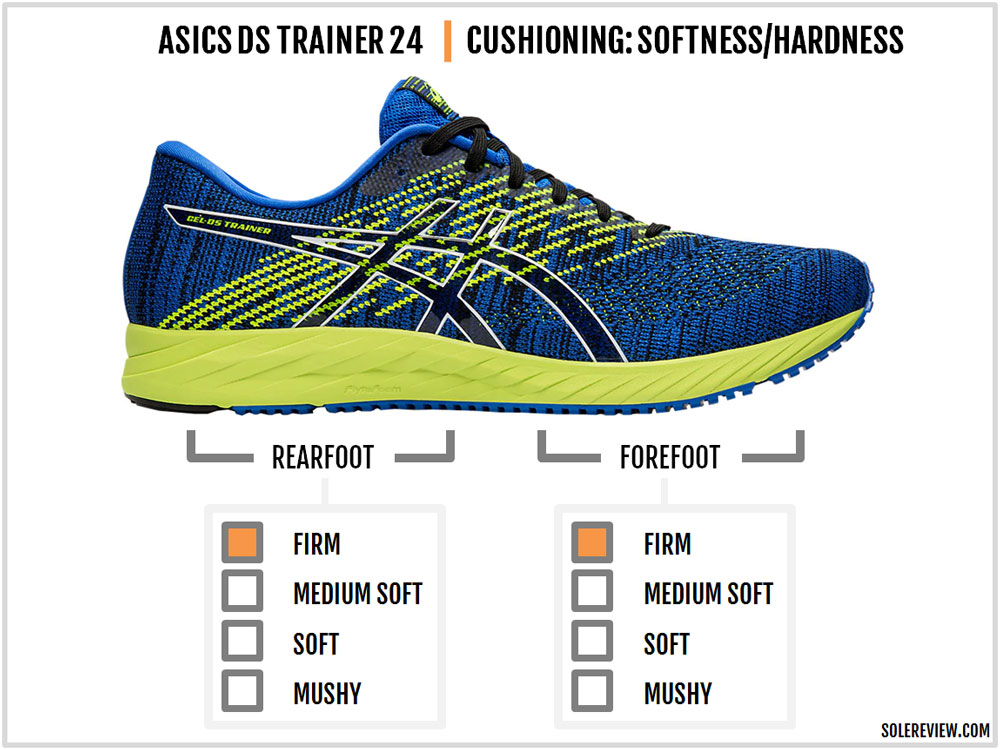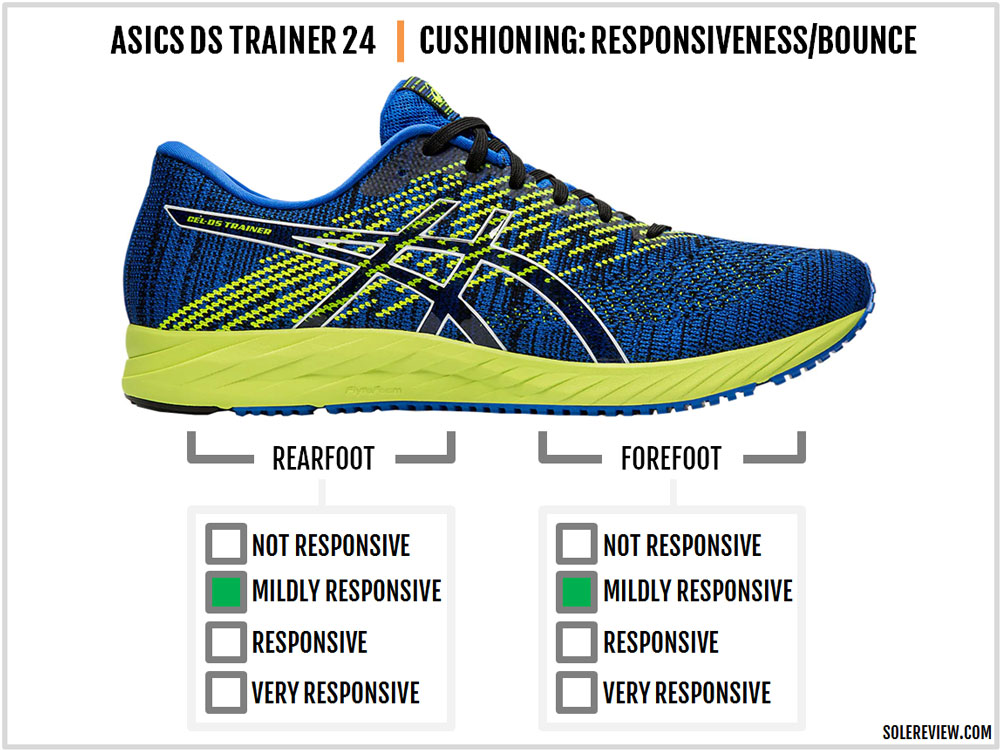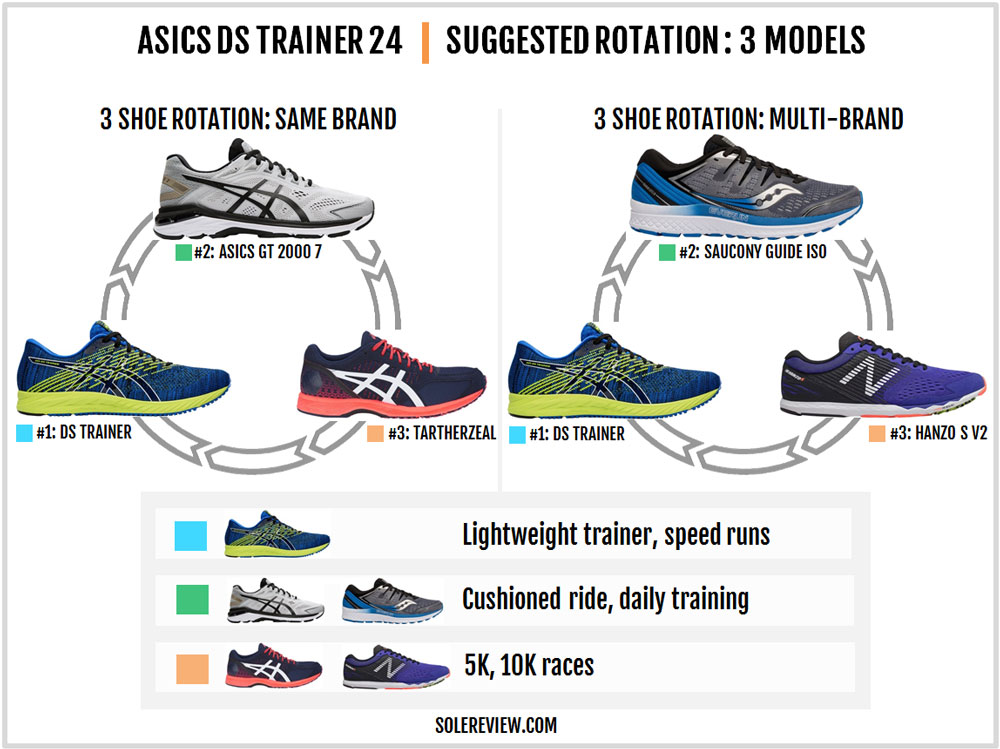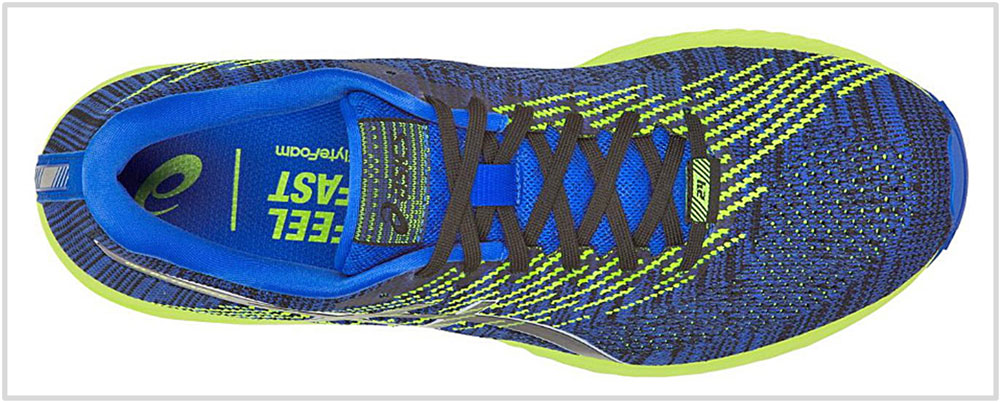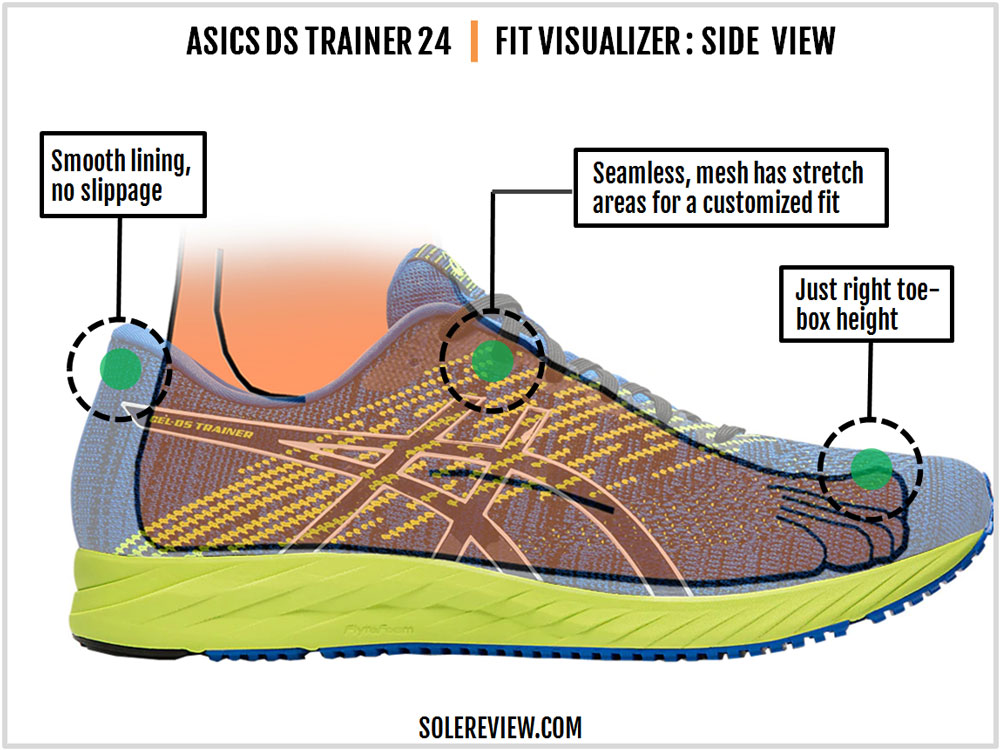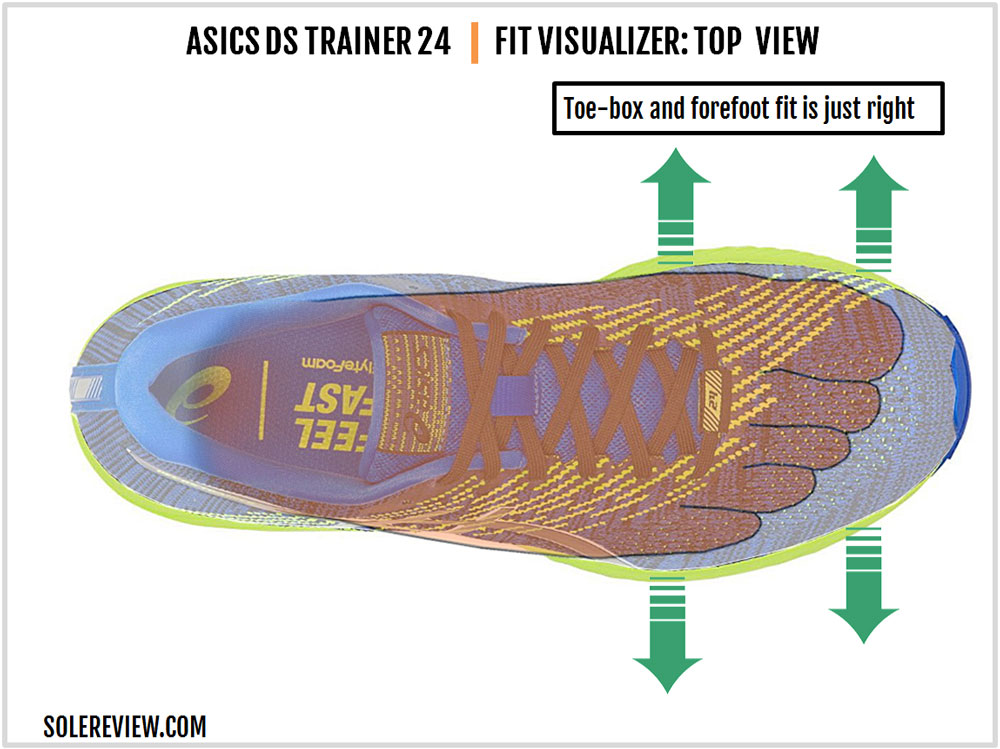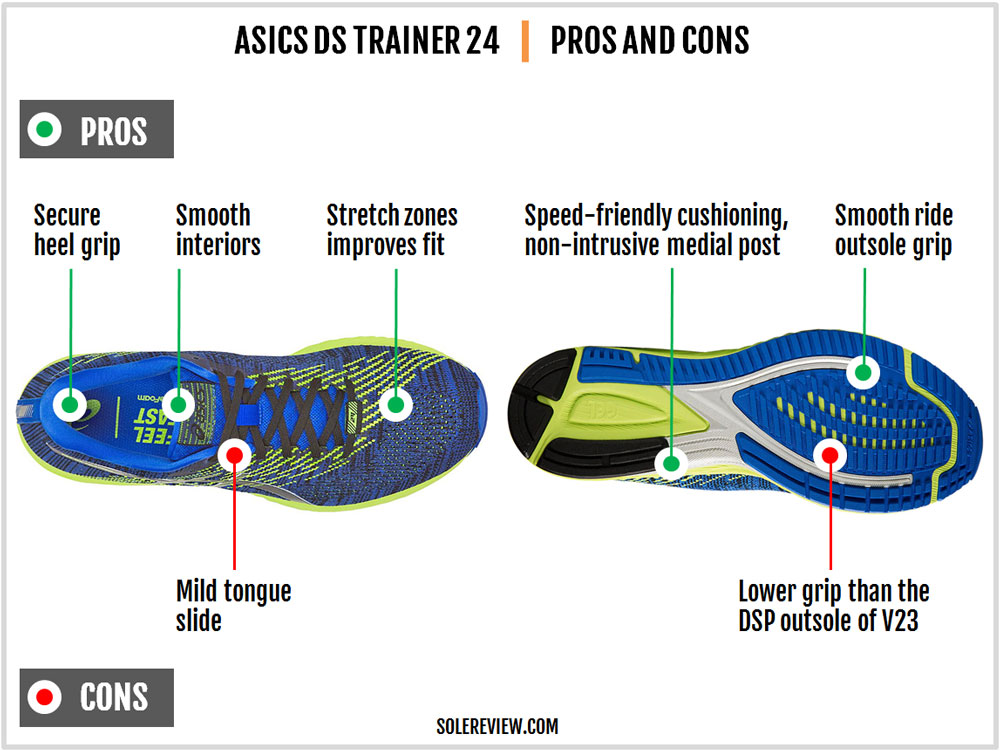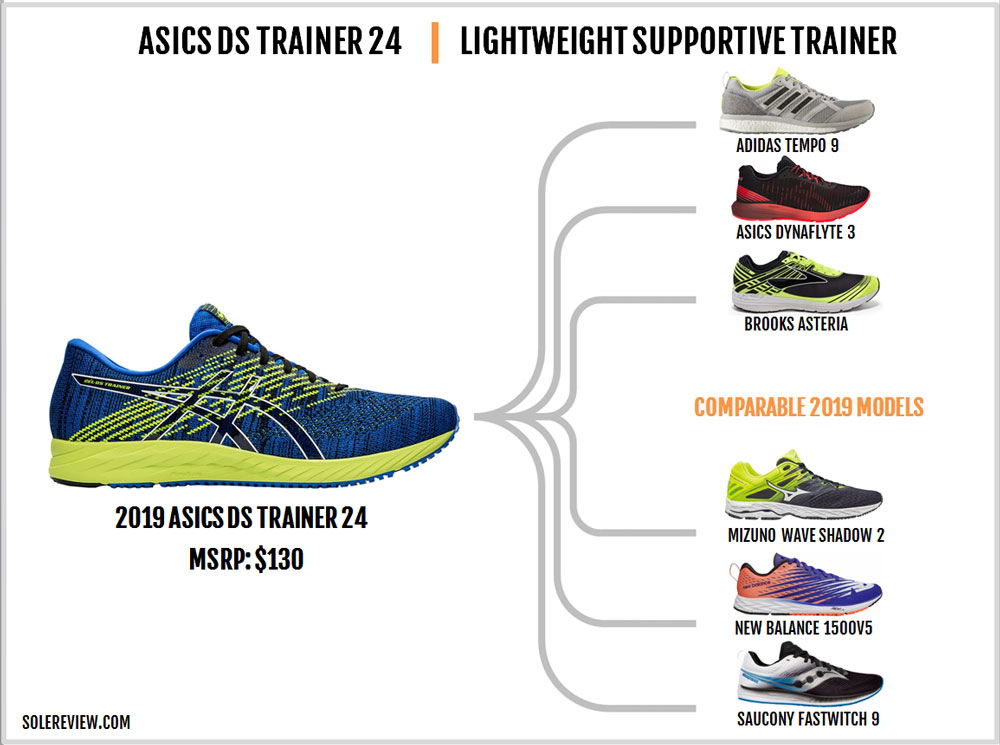INTRODUCTION
The DS Trainer has been around as long as the Kayano and was originally marketed as a lighter and sportier version of the stability shoe concept. In our review of the 22nd edition, we showed you what the 1996 version looked like.
Times have changed – long continuing series (such as the Kayano, DS, and the Nimbus) have evolved, both in style and function. Newer materials meant lower weight and fewer layers. Manufacturing advances have led to cleaner aesthetics in running shoe design.
Though the DS Trainer 24 of today is a markedly different product than the older designs, its core positioning hasn’t changed. It continues to occupy – and quite successfully so – a niche which is the lightweight support category.
We give Asics tough love in many of our reviews, but you can’t take away the fact that Asics virtually invented the lightweight stability segment.
Unlike the Nimbus and the Kayano, the DS Trainer has been more or less consistent. What’s more, this is an Asics model where new updates also meant improvements. Changes aren’t made here for the sake of it; the new DS Trainer 24 is a case in point.
The new DS has been refreshed from the ground up. There’s a new knit upper with stretch zones and a cleaner Flytefoam midsole. The outsole loses the DSP lugs and the plastic shank so there’s a bit of a compromise but little else. Push-offs are still great due to the large outsole contact area.
In short, it is worth upgrading from the DS Trainer 23. And even if you have historically worn lightweight trainers without a medial post, the DS-Trainer should work for you. There’s a bit of the New Balance 1500 in the DS – the medial post is of a non-intrusive kind.
And for whatever it’s worth, we think that this version is the best looking DS Trainer yet.
THE RIDE EXPERIENCE
The 8 mm offset, triple-density midsole uses Flytefoam and a medial wedge which is co-molded into the sidewall. On the outside, it is hard to tell that the DS uses a medial post. But it is very much a part of the shoe, and Asics uses subtle visual cues like the molded ridges over the firmer section.
Without counting the rearfoot Gel, the midsole has three densities of foam. You know which the first two are; the third is over the midfoot outsole.
The DS Trainer no longer uses a plastic footbridge. Instead, a forked component made of hard EVA foam replaces it. Asics calls this ‘EVA Trusstic’, and the result of this change is an outsole which is closer to the ground.
The outer side has a continuous strip of outsole rubber spanning the forefoot and the heel. The inner side touches the ground only during loading. Nonetheless, the midfoot is closer to the road than the DST-23, and this is a good thing if you’re making ground-contact landings.
The outsole coverage is generous. Firm rubber is used over most areas except for the section under the heel. The traction is better than most running shoes but we have to compare the 24’s grip with that of the 23. The previous version had lugs mounted by the dual-stencil process, and that gave the forefoot a lot of bite.
There is a silver lining though. Regular rubber lugs tend to last longer than their DSP counterparts, so we believe that the lifespan of the new DS will be slightly longer.
This is all conjecture though – we’ll update this review if long-term ownership feedback establishes otherwise.
The DS Trainer’s midsole is firm with a significant difference between the front and rear stack heights. The front is only 9 mm thick versus the 17 mm on the rear, so this isn’t a shoe with deep cushioning. This is a good thing because the midsole excels at what it does – the DS Trainer is perfect for speed runs.
We’d also like to point out the DST doesn’t have a foam lasting below the insole. There’s a fabric with zero softness, and even the insole is made of molded EVA – not the squishy, open-cell kind. So you get a sliver of softness but just.
Below that, it’s all business.
The Flytefoam midsole has nearly no give and is very efficient. No matter how you land, transitions happen swiftly and without laziness. The DS Trainer 23’s outsole lugs were all over the place; the 24’s layout is better organized to facilitate a smoother ride.
Responsive isn’t a term you’d associate with Flytefoam. It is efficient and lightweight – after all, the DS Trainer is a sub 9-ounce shoe – but there’s very little in the way of spring-back.
One tends to forget that the midsole has a medial post molded into the side. The midsole design is balanced and creates a supportive ride without bias. At the same time, it’s not rock hard. On runs of 10K and longer, the midsole damping provides sufficient protection.
For other use-cases, there are options across the spectrum. The Asics Tartherzeal 6 is a race-day shoe with razor-sharp outsole bite, and so is the New Balance Hanzo S V2.
If you want more cushioning, then the GT 2000 7 and the Saucony Guide ISO 2 have that.
UPPER FIT QUALITY
Not only is the DS-Trainer the best looking version, but it also has the smoothest fitting upper. The single-piece knit upper with a seamless interior and stretchable zones make that happen.
The upper is an engineered mesh in the truest sense of that term. Densely knit areas provide structure while the elastic zones over the forefoot and inner midfoot make the upper fit better. The pores help with the ventilation too.
All the layers and trims have been removed from the upper. For example, there’s no plastic heel clip. Or layers and molding over the upper. There’s just some high-density printing over the mid and rearfoot.
The reduced level of detail doesn’t have a detrimental effect on the fit. The true-to-size upper has a very uniform fit without any hot spots.
The heel lining is plush and works together with the internal counter for a secure hold. The toe-box isn’t squashy and the stretchy ceiling helps create some wiggle room.
The tongue isn’t tethered to a sleeve so it slides. It’s not a bother but is an easy fix for Asics if the brand wanted it gone. Brands like New Balance manage this perfectly well in similar silhouettes.
Reflectivity is reduced on the 24 to a narrow strip but it suffices for low-light running.
PROS AND CONS
Pros, you say? The DS Trainer 24 has lots. The upper fits very smooth inside and has all the right proportions. The stretch part of the knit mesh helps with fit and comfort. We do wish the tongue came with a thin sleeve, though.
The shoe’s lightweight build is great for speed runs. The Flytefoam midsole and the new outsole design improves the transitions while delivering the cushioning one needs.
SIMILAR LIGHTWEIGHT SUPPORT SHOES
Unlike full-bodied neutral or stability trainers, the DS-Trainer 24 occupies a sparsely populated segment. There are a handful of other models, though the closest happens to be the New Balance 1500V5.
Like the DS, the 1500’s medial-post has a barely-there presence. The firm midsole is padded yet efficient, and the outsole grips well. The upper is spacious for a shoe of this class.
The Saucony Fastwitch 9 is a bit sportier. The midsole is firmer with a 4mm offset and the upper is more race-oriented. Underneath, the Pwrtrac outsole has excellent traction.
A relatively softer ride is found on the adidas Tempo 9. The Boost midsole has plenty of squish, and this adidas shoe doesn’t use a medial post. The midsole has a ‘Stableframe’ structure which has added EVA on the inner side. The upper fits snug and slightly short.
On paper, the Mizuno Wave Shadow 2 is not a ’stability’ shoe. And yet, using the hard, thermoplastic Wave plate inside its midsole makes this lightweight trainer inherently stable.
There’s another shoe in Asics’s line-up called the Dynaflyte 3. It lacks specific stability features such as a medial post but is supportive and has more cushioning than the DS-Trainer.
The Asteria is Brooks’s answer to this category. This model hasn’t been updated in a while but just know Brooks sells a lightweight support shoe – if that’s what you want.
| Do you own this shoe? Improve this review by sharing your insights – submit a review here. |

